Automotive Stories
LATEST STORIES >> Geoff Wheatley Stories INDEX page 3 - Click Here
Geoff Wheatley Stories INDEX page 2 - Click Here
Geoff Wheatley Stories INDEX page 1 - Click Here
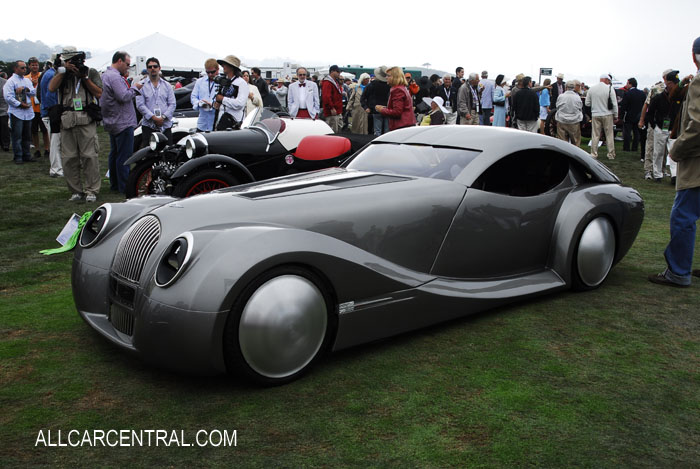
100 Years of the Morgan 1909-2009
A hundred years is a long time for any business.
In the year 2009 the Morgan Motor Company celebrated a hundred years of
service and production. Further more its still the independent company that
it was when the founder, Harry Morgan borrowed three thousand pounds from
his father, the Reverend Henry George Morgan, rector of Stoke Lacy, England,
to build motor cars.
What is the secret of the Morgan success?
For compleate story
By Geoff Wheatley: Enter Here
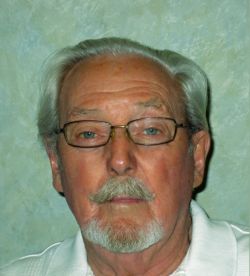
Driving in Europe with Geoff Wheatley in, 2012
The cost of fuel tends to make the average driver
confine his or her interest to miles per liter rather than miles per hour!
However on the Auto routes both the trucks and cars can cruise at 80 mph with
special lanes for these speeds, there is a 50 mph lane, a sixty five mph
lane and a 75 or more lane. Coaches with passengers have their own
designated lanes with a limit of 60 mph. This makes for pleasant driving especially
if you are not keen on setting a new speed record! By using these lanes
you can simply cruise along at you selected speed, no need to overtake and
few ever do.
For compleate story
By Geoff Wheatley: Enter Here
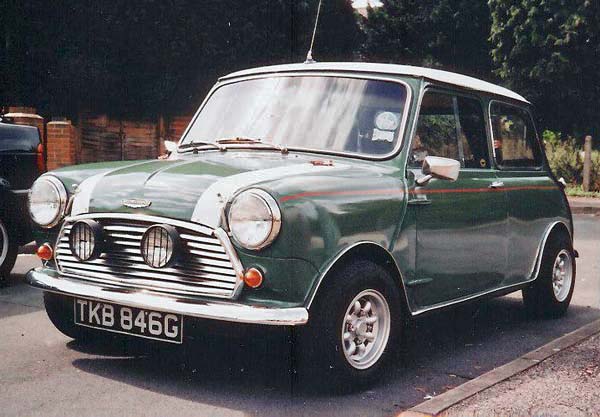
Austin Seven & The Mini
One of the most famous cars ever produced was the British Austin Seven
that was also made under license in Germany, Japan, France and America. The engine for the Austin seven was designed by a young eighteen year old engineer named Stanley Edge.
It is fair to say that no other car influenced the future of small car production than the Austin Seven and later the Austin Mini.
In 1927 BMW under license, manufactured the Austin Seven known in Europe as the BMW Dixie. Later the BMW Corporation purchased Rover which included the Mini
and now continues the Mini line under the BMW banner.
For compleate story: Enter Here Geoff Wheatley
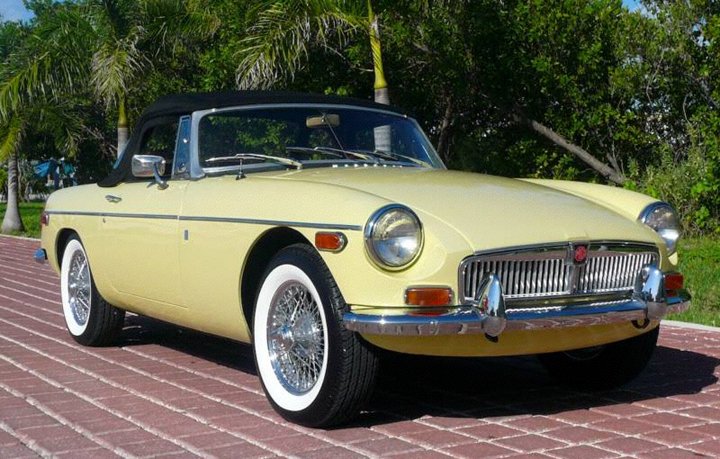
Fifty Years of the MGB 1962-2012
In the early spring of 1962, the 100,000th MGA rolled off the factory floor in Abingdon, England as one of the most successful MGs ever produced. Like the previous TC and TD models, it had a four year production run which most people felt was about the right time before a company presented a new product in the sportscar
market! Motoring journalists of the day asked, "What can MG do to beat this record and produce an equally attractive sports car?"
They did not have to wait long! In June that same year the new MGB was presented to the public and the motoring media. Both went quite ecstatic!
For compleate story: Enter Here Geoff Wheatley
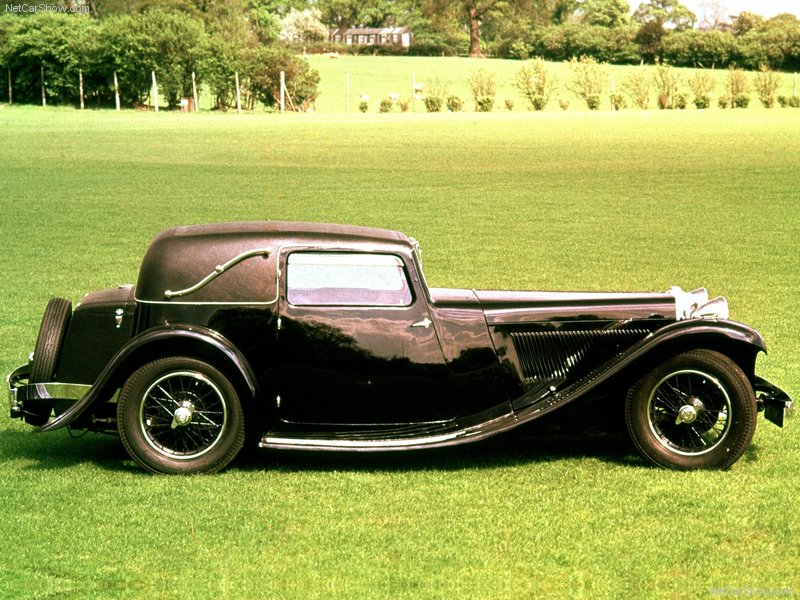
80 Years of Grace and Beauty
2011 was the 80th Anniversary of the SS Jaguar Company although the term Jaguar was not used until 1936. The SS1 was simply known as the SS Coupe. This is a brief history of the now famous Jaguar Sports car.
For compleate story: Enter Here Geoff Wheatley
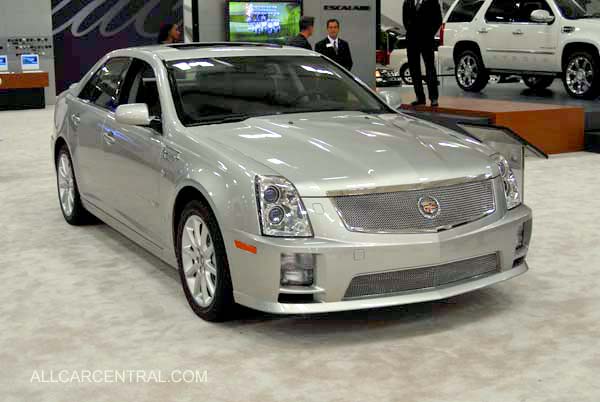
Blowers In The Economy Age
I recall when I was around fifteen and took a serious interest in internal
combustion engines the term "Blower" or Supercharger, was usually associated with cars
like the 4.5 liter prewar Bentley or some monstrous machine that was going to
compete at the Le Mans.
However, this rather old technique has found a new place in the quest to design a 100 miles to the gallon vehicle. The new Chevrolet Lacetti has managed to redesign the old Blower principle
with a rather unique twist.
For compleate story: Enter Here Geoff Wheatley
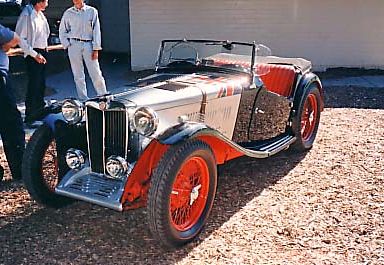
Memories of Abingdon
I was born in close to Abingdon, home of the British MG Company, my Father worked for MG for most of his life as did many others in that area or traveled to the main Morris Works at Cowley near Oxford.
We lived a few miles from the factory and I do recall that these funny looking MG Vehicles passed our door virtually every day, except Sunday of course. When the war started the factory went over to war work and people like my Dad went off to do their bit, what ever that was! Those too old or too young to be drafted stayed on at the MG works assisted by a new brigade of workers on the assembly lines wearing head scarves and pants. For the first time in the history of the Morris Motors Empire women were employed to do assembly work and/or paint, clean and assemble war production parts.
For compleate story: Enter Here Geoff Wheatley
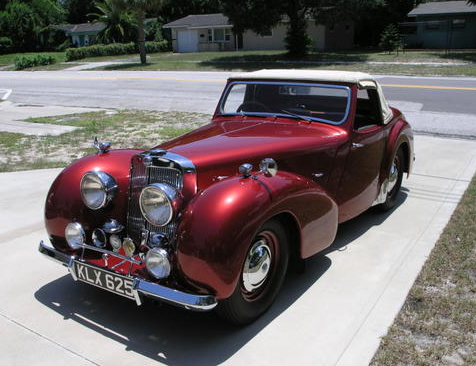
1946 Triumph 1800 G.T.
The 1903 Triumph Tricar was a
modest success, a combination of a three wheel motor cycle with seating
for two people at the front. By 1914 Triumph was building motor cycles and
cars for the government and like so many other early manufacturers the first
world war enhanced the ability of Triumph to become a serious vehicle
manufacturer. However, the depression forced Triumph to sell off there
successful motor cycles business and by 1938, despite the production
of some of the
most attractive pre-war vehicles the company went broke.
For compleate story: Enter Here Geoff Wheatley
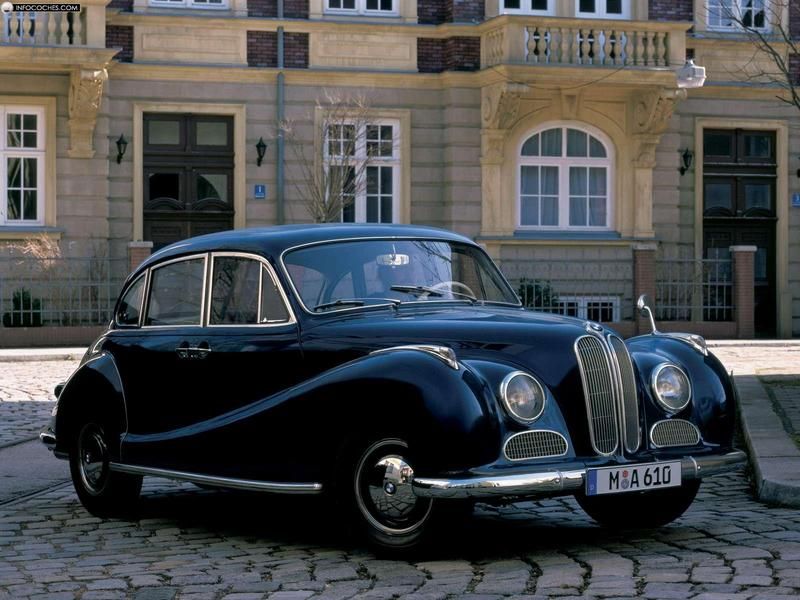
BMW, The Company that would not Die!
The Mini was a car designed back in the 1950 which was given a new life when BMW took over the failing Rover Corp. You can also add the once popular MG Sports car saved by BMW in the 1990's. What you may not know is that BMW almost faded from the motor world after a highly successful career making aircraft engines, motor cycles and of course fast and attractive vehicles. The company was founded in 1916 at the peak of the first world war. It supplied aircraft engines to the German air force and the famous Red Baron when not directly involved with the war tested these engines.
With the end of the WWI, BMW suffered its first major problem. Under the terms of the "Treaty of Versailles", Germany was forbidden to make aircraft, the consequence was that 15,757 aircraft and 27,757 aircraft engines were handed over to the Allies and were destroyed in company with 15 Airships and millions of aircraft accessories.
For compleate story by Geoff Wheatley: Enter Here
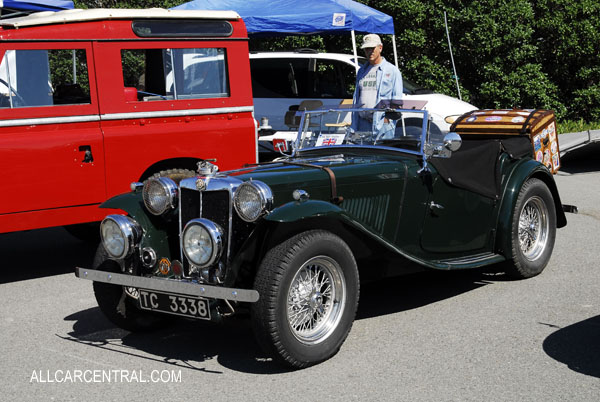
How British Leyland Grew Itself To Death
Historical writer Geoff Wheatley looks at the
life and death of the british car industry.
For compleate story by Geoff Wheatley: Enter Here
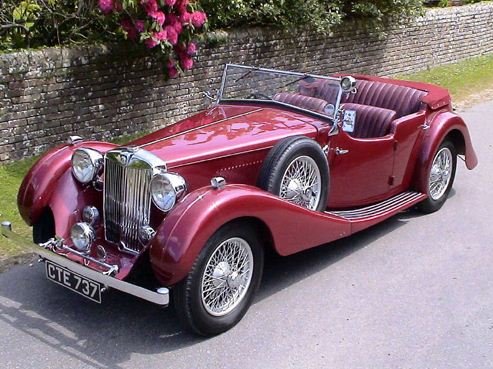
A review of the 1938 MG Sales Manual
A few years ago I found a copy of a most fascinating publication; The MG
Salesman's Manual dated December 1938 at a Garage sale in the UK. Rather
worn and in need of restoration it could still be read. It would seem that the
publicity department at either Cowley or Abingdon were on the ball in
providing excellent sales material to their dealers. The book was intended for
the exclusive use of the salesman, and I assume was never to be seen by the
general public. It contains a host of interesting information on the
options available for all the current MG vehicles, which were: MG 1.5 Liter Open
Four Seater..MG 1.5 Liter Four Door Saloon...MG 1.5 Liter Folding Head
Foursome. (Looks like a Tickford). Then a repeat of these vehicles in a Two
Liter, (Six Cylinder), Version. There is also a 2.6 Liter mentioned but no
information on body style etc.
.... Now for the most interesting feature of the factory options: Color, you
could have your car in what ever color you wanted for a few bucks more. On
top of that metallic finish was also available but this was expensive
compared with the normal finish. A metallic finish would cost around $36.00 based
on the 1939 exchange rate of four US dollars to the British pound.
For compleate story by Geoff Wheatley: Enter Here
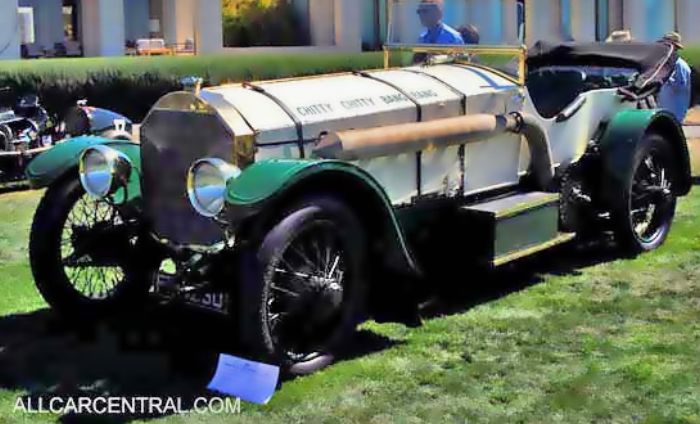
Brooklands, the First Modern Race Track in the World
The next task was to sell the idea of Brooklands to the public and it was decided that the best approach was to promote the whole idea of a day at the motor races as a new English sport like going to the horse track with the family, a picnic basket and folding chairs. It was also indicated that motor cars would be raced on exactly the same principles as horses, with all the same rules and regulations. .....
Within a couple of weeks an army of builders and all the other people connected with construction descended on Weybridge. Machines designed to move mountains were brought by new railway lines laid across the green meadows and bluebell woods surrounding the small community. It was without doubt a major invasion of the modern world. Fifteen hundred men and their followers descended on the village and soon founded a colony almost ten times as big as Weybridge!. The only person who was happy about the situation was the owner of the Village pub, the "Hand and Spear" who squeezed over two hundred workers through his twelve by fourteen foot bar every night including Sunday!
For compleate story by Geoff Wheatley: Enter Here
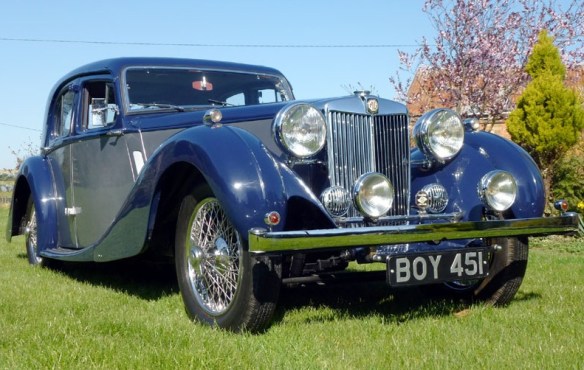
The Big Prewar MGs - The SA, VA, and WA
We all know about the postwar boom with the TC ..TD and TF and who can forget the sporting image of the MGA and the very attractive MGB who's appeal lasted almost eighteen years, a record for any British car.
However, between 1936 and 1939 resulting from the internal change of policy at the Abingdon factory a unique range of luxury cars were produced that completely changed the image of MG if only for a brief period of motor history, starting with the MG. SA ...
For compleate story by Geoff Wheatley: Enter Here
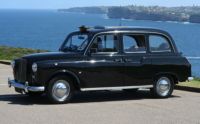
The London Cab
The London cabs are specially made but change their design every few years.
.... there are over 24,000 located in the British capital in use every day, three hundred and sixty five days a year. I am referring to the popular London Taxi service better known as a "Hackney Cab", a name dating back at least three hundred years.
The (drivers) first year is spent learning every location of 26,000 streets within the London area and that's only related to a six mile radius from Charring Cross station considered the center of central London...
This knowledge is obtained by getting each would be driver to spend a year on a motor scooter rain or shine memorizing these required locations.
For compleate story by Geoff Wheatley: Enter Here

France 2012 & British Cars
If any reader is thinking of renting a car in Europe especially France there are a few things that you should consider. After November 2012 every car on the French roads must have the following items.. A working Breathalyser, The compulsory yellow vest to be worn by the driver if there is an accident,...
Being the owner of several British cars, most of which spend more time in my workshop than on the road, I can appreciate the need to carry reliable support equipment.
Like the modern French requirements I was required, out of sheer necessity, to carry several items that you would not normally associate with a Sunday afternoon drive.
For compleate story by Geoff Wheatley: Enter Here

A Look at Currant Gasoline Blends Used in Older Cars
A few years ago I recall all the fuss that surrounded fact that non-leaded gasoline was going to ruin the engine of you beautiful classic car. As we all know very few engines ever got destroyed by the change in fuel production and for those who needed a simple solution various products suddenly appeared on the market that would replace the lost benefits of leaded fuel.
We now have another set of experts who are concerned about the use of Ethanol in modern fuel with suggestions that this may well represent the same threat that none leaded fuel presented when it was first introduced. From all the data that I have read and there is plenty around, the worst thing about the Ethanol Blended fuel is that its life in the gas tank of a car is limited.
For compleate story by Geoff Wheatley: Enter Here
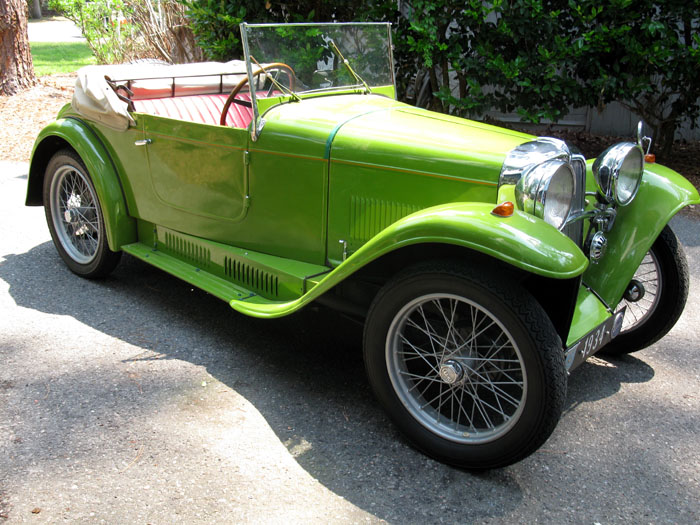
AERO Automobiles: Czechoslovakia 1928 to 1939
The original company produced aircraft engines and airplanes but their market declined as the world depression spread to Europe. In order to keep the company going a single cylinder Cycle Car prompted by the success of the British Baby Austin Seven, was produced in 1929.
By 1932 AERO had developed the Type 20 two cylinder motor car with a 662cc power unit. However, the real success story was the Aero Type 30 introduced in the fall of 1934. This car was successful on international rallies that were very popular at that time, with a larger 998 cc power unit. The streamline design was in tune with the styling of that period introduced by the Italians who went on to dominate the European car design world for the next fifty years.
For compleate story by Geoff Wheatley: Enter Here
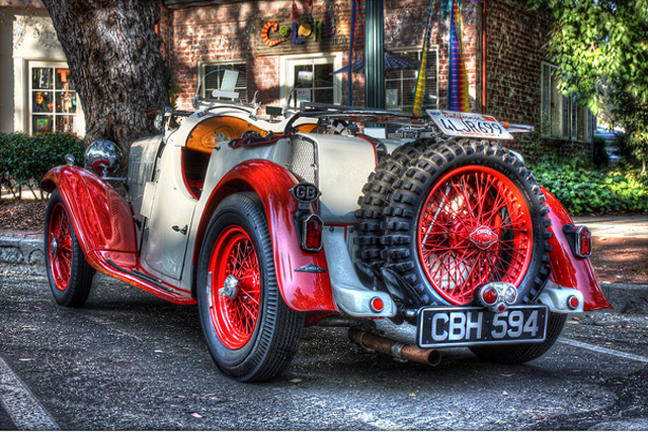
Singer SMX & Singer Motor Company
One of the more successful auto companies in Britain was the Singer
Motor Corporation, based in Birmingham. Singer started by making
motor cycles in 1900 until 1905 when they produced their first
automobile. Between 1905 and 1954,
The fiberglass Singer story starts with flamboyant American Singer
distributor, Bill Vaughan. Vaughan, who saw the future in fiberglass and was
considering opening three manufacturing plants (California, New York
and Florida) to produce plastic bodies to be fitted to production
Singer roadster chassis. This developing enterprise, along with ........
For compleate story by Geoff Wheatley: Enter Here
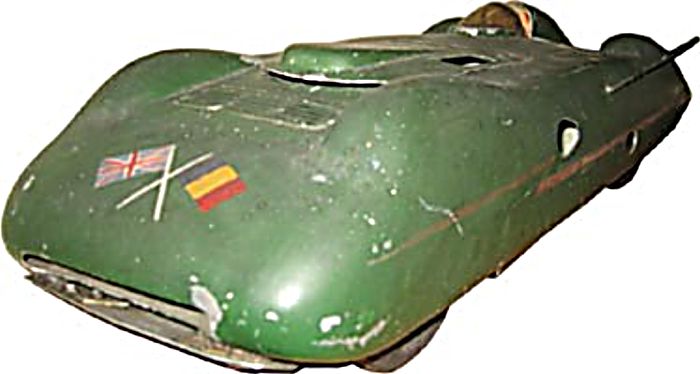
200 MPH MG
The MG had been fitted with a Centric supercharger which certainly boosted the cars performance but also added to the possibility that the small power unit could be seriously damaged if the charger was not used correctly, hence the need for Kesterton. The appearance of the car was certainly not the standard 1938 MGTA. The shell body was a sleek streamline design....
For compleate story by Geoff Wheatley: Enter Here
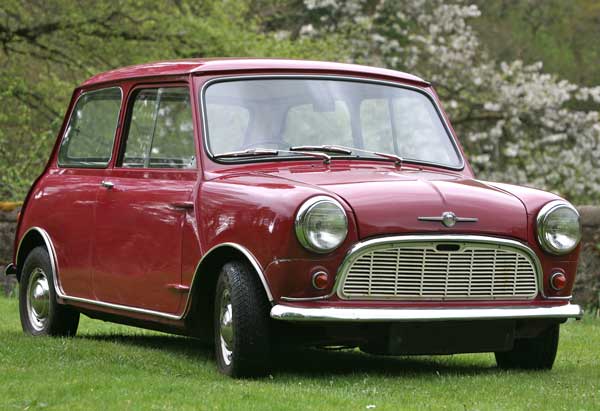
A ROSE BY ANY OTHER NAME - The Mini
In the fall of 1959, a rather strange looking front wheel drive car was presented to the British public. Its first attraction was the claim that the car would give the driver in excess of 40 miles to the gallon, also that its 850 cc engine required no special attention apart from an oil change every 4000 miles. It could carry four grown individuals in modest comfort and if pushed you could squeeze a couple of young-sters in as well.
For compleate story by Geoff Wheatley: Enter Here
Images by Rick Feibusch
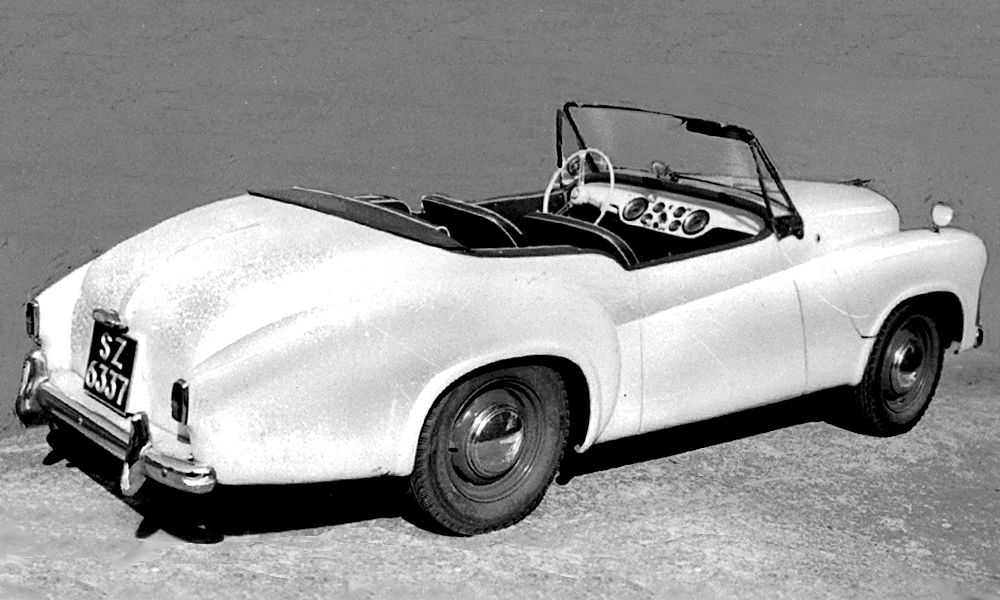
THE SMX - FIBERGLASS & THE SINGER MOTOR COMPANY
One of the more successful auto companies in Britain was the Singer
Motor Corporation, based in Birmingham. Singer started by making
motor cycles in 1900 until 1905 when they produced their first
automobile. Between 1905 and 1954,
The fiberglass Singer story starts with flamboyant American Singer
distributor, Bill Vaughan. Vaughan, who saw the future in fiberglass and was
considering opening three manufacturing plants (California, New York
and Florida) to produce plastic bodies to be fitted to production
Singer roadster chassis. This developing enterprise, along with ........
For compleate story by Geoff Wheatley and Rick Feibusch: Enter Here
BACK TO TOP